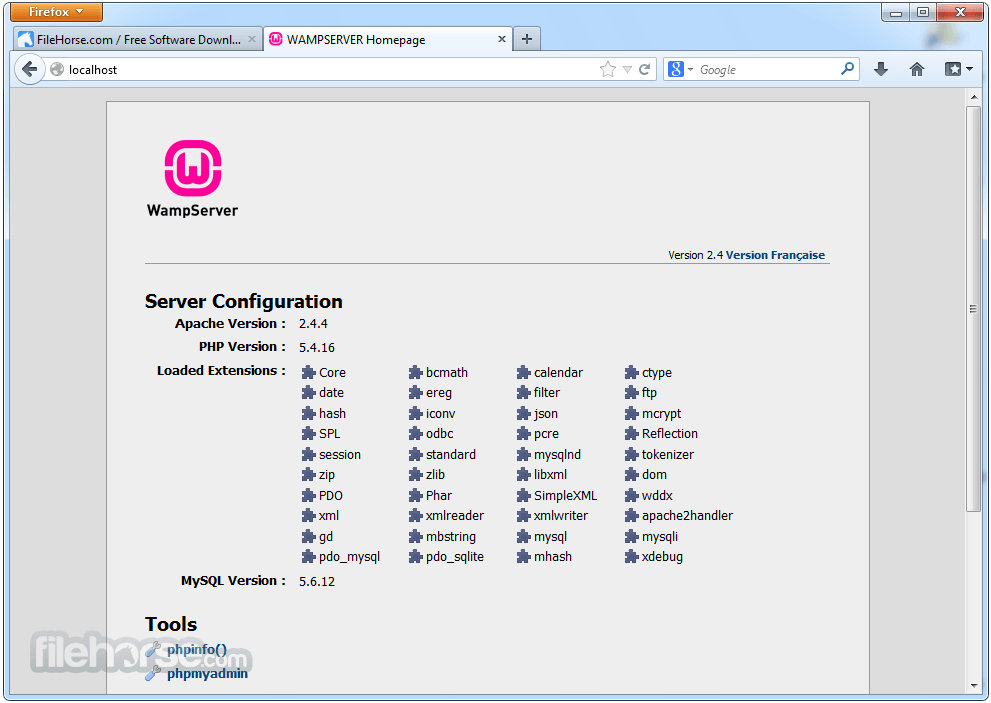Install Mysql Module Php Windows 7

This article explains how to install PHP on Windows 7. This includes how to install the whole PHP, Apache and MySQL on Windows 7. You'll also learn how to configure the environment to ensure that the.
We had cause to investigate a problem with a Joomla component installed upon an IIS platform. We usually use Apache as our web server, so were not totally familiar with the use of IIS, so this blog covers the installation, configuration and the basic options of IIS, PHP, MySQL and Joomla. There is no intent to make use of such a setup upon a regular basis, and would anticipate only having to perform the task infrequently, hence the decision to document the steps.
We encountered a number of problems as we performed the set up, and we searched on the web in many placed before achieved our goal. For this reason this is somewhat long, but the benefit being that we have all the details in one location. The installation is assuming the use of a local installation upon a single workstation. Installing IIS This is a standard Windows configuration. Go to control panel Open [Programs and Features] Open [Turn Windows Features on or off] Click to Check the [Internet Information Services (IIS)] then Click [Details] and ensure that the components as indicated below are checked. We found that we had to enable the.Net Extensibility feature before we could get the PHP CGI feature to work correctly. We found out the hard way and had to go back to turn the feature on, but now we know we can ensure it is set up at the start, before we install PHP. Driver Epson Stylus C42sx Para Windows 7 64 Bits.
Note: We are not intending to make use of ASP or FTP services. Click [OK] and wait a while whilst Windows performs its’ reconfiguration. We should now have a directory named ‘inetpub’ located on our Drive (C:) or whatever the system drive is. Under that directory there is another folder named ‘wwwroot’ and it is here we locate all of our web pages. Testing IIS Using our familiar favourite Text Editor (notepad, nodepad2 or whatever), we typed “Hello World” then saved the file to c: Inetpub wwwroot and named it index.html. Then opening our web browser and typing in the address bar localhost/index.php we hit [Enter] key. Having confirmed that IIS is working fine we can continue, if not then we have a problem and need to review the steps above to discover what we have done wrong.
Configuring IIS Go to [Start Menu], Click [Run] and type: inetmgr then hit [Enter] key. Alternatively go to Control Panel, Open [Administrative Tools], Open [Internet Information Services], which should also open the Internet Information Services Manager.
Right-Click on [Default Web Sites], Choose [Properties], the Properties dialog box will appears, Click Configuration and verify that it is pointing at c: inetpub wwwroot. This path can be set to where ever it is desired to locate the web site.
We now configure the default document, which specifies which documents should load if one is not specified in the web site address entered in the browser address bar. We want to add some defaults for php documents that will be used when we have installed PHP (below). Download Game Chess Gratis Untuk Hp more.
We add two documents, index.php and default.php. Click the Action add and enter the specific file names. The end result will look similar to that shown below. The Document that will be loaded automatically is the one that occurs first in the default Documents list, so we ensure that index.php occurs first in the list. Installing PHP We obtained the php file from Note: Non-thread-safe build of PHP is recommended when using IIS. The non-thread-safe builds are available at In the download page under windows Binaries Section, Click on [PHP 5.x.x] zip package (Make sure it’s php 5 or higher).
Select [download mirror], it will take a few minutes depending on the connection’s speed. After downloading completed, create a directory on your C: drive (or system drive) or whatever you want and name it php (as an example), and extract the php zip file to the specified directory i.e. Go to the extraction folder which is c: php and search for “php.ini-recommended” or “php.ini-dist” or any other php ini file that you wish to use as a base.
Copy the file and name it php.ini. Configuring php.ini Note that PHP uses file-based session state by default. One can modify a number of additional session settings, including whether cookie or URL sessions should be used, and whether sessions are created on the first request or need to be explicitly created. We need to configure the sessions saving directory since we need also this for the Joomla installation. In Windows ® Explorer, create the session subdirectory in the PHP installation directory. Right-click the session directory, and select Properties. In the Security tab, click Edit.